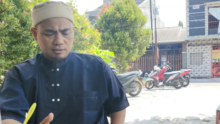Terrorism in Indonesia After Bali Bombing 2002

The Bali bombings, October 12 in 2002 that killed 202 peoples from 22 countries and 324 others suffered serious injured became the deadliest acts of terrorism in Indonesia so far. After that, bombs and terror attacks continued even to this day. After the arrest of the Bali bombers, namely the Amrozi brothers, it was discovered that the first Bali Bombing was carried out by the Al Qaeda-affiliated Jemaah Islamiyah terrorist network. A senior researcher from the Center for the Study of Radicalism and Deradicalization (PAKAR), Moh Taufiqurrohman, said that even after the first Bali Bombing Jamaah Islamiyah was divided into factions (Hambali Faction, Noordin M Top Faction, etc.) various terror attacks continued to occur.
In 2008, some members of the Jamaah Islamiyah Group founded Jamaah Ansharut Tauhid following the departure of Abu Bakar Baasyir from the Indonesian Mujahidin Council (MMI). Then came the Jamaah Tauhid Wal Jihad, and KOMPAK led by Abdullah Sonata as well as Wahdah Islamiyah in South Sulawesi. They then established the Jalin Janto military camp, Aceh together with the Dulmatin Group but later its members were arrested by the police.
“Members of the group then took revenge, including the Cirebon Bombing (2011) and the GBIS Kepunton Solo Bombing,” said Taufiq.
After 2010 or after the Mega Kuningan bombing, the Police through the Special Anti-Terror Detachment (Densus 88) actively arrested JI members. This group began to recede even though after that there were still several bomb attacks such as the Thamrin bombing and the Malay village bombing.
“In the same year, Palu, Central Sulawesi started to get crowded with JAT people in Poso, this was before the establishment of the East Indonesia Mujahidin (MIT),” said Taufiq.
They began carrying out terror attacks that began with the shooting of a police officer at Bank BCA in Palu on May 25, 2011. This terror incident in Palu also marked a change in targets, from being westerners to police and non-Muslims. After that, there was a series of terror attacks targeting the Police and the Church.
A year later, Pepi Fernando from NII emerged, known for the thermos bomb, pipe bomb and book bomb attacks. In the same year, the West Indonesia Mujahideen emerged with Abu Roban as a character specializing in bank robbery. In 2013, MIT was declared with Santoso alias Abu Wardah as its leader.
“In 2013, ISIS was founded, and in 2014 ISIS in Indonesia emerged starting from Nusakambangan by Aman Abdurrahman, since then terrorism in Indonesia has been controlled by JAD,” said Taufiq.
Taufiq also explained that many Indonesian jihadists have migrated to countries such as Afghanistan and Syria. They also carried out jihad in the Philippines and carried out attacks there, including the Philippines Jolo Bombing (2020) which killed 15 people and injured 70 people, one of which was said to be from Indonesia.
Active terrorist group in Indonesia after Bali Blast
Indonesian Mujahideen Council (MMI)
The Mujahidin Council (MI) or later more commonly known as the Indonesian Mujahidin Council (MMI) was founded by Abu Bakar Ba’asyir on 5-7 August 2000 during the first congress of the Mujahidin Council in Yogyakarta which was attended by around 1500 people from various movements. . On Monday, June 12, 2017, the United States Department of State declared MMI a global terrorist organization and a threat to the safety, national security, political and economic interests of America.
At present, this organization still exists and is still active but mostly acts as a radical mass organization with the principle of Amar Ma’ruf Nahi Munkar (Calls to good, and prevents evil). They do a lot of sweeping gambling, drugs and actively participate in mass demonstrations on issues of religious politics.
Congregation of Ansharut Tauhid (JAT)
Jama’ah Ansharut Tauhid or JAT was founded in 2008 by Abu Bakar Ba’asyir, a cleric who is known as one of the most important figures in terrorism in Indonesia. Terrorist figures who took part in the establishment of JAT besides Abu Bakar Ba’asyir include Bahrumsyah (who later became an ISIS commander from Indonesia and died in a car explosion in Syria on February 13, 2017), Aman Abdurrahman who is known as a carrier of the ideology of Tauhid Wal Jihad (a teaching jihad ideology that emerged and developed in Iraq in the range of 2001) entered Indonesia and Santosa or Abu Wardah who later formed the East Indonesia Mujahideen group.
JAT experienced a split during the emergence of the Islamic State of Iraq and Syria in 2014. Some agreed with ISIS or Pro-ISIS and some refused to support ISIS. The group that refused to support ISIS then established a new organization named Jamaah Ansharut Syariah which was led by one of Abu Bakar Ba’asyir’s sons, Abdul Rohim Ba’asyir. Meanwhile, Abu Bakar Ba’asyir, who in 2010-2021 was in prison, is known to have given his support to ISIS. The suspicion was strengthened when in 2014 a photo circulated showing Abu Bakar Ba’asyir sitting together in a room at the Kembang Kuning prison, Nusakambangan, Cilacap, Central Java with ISIS leaders at that time with the ISIS flag as a background. On February 23, 2012, the United States Department of State designated JAT as a foreign terrorist organization (Foreign Terrorism Organization). Organizationally, JAT currently exists but does not show or do any activities. For the level of risk, JAT is currently not dangerous.
In 2010, JAT leaders were suspected of raising funds to finance military training for terrorist groups in Aceh. They are also suspected of being behind the suicide bombing at the Bethel Gospel Church (GBIS) Kepunton, Surakarta, Central Java, September 25, 2011. In addition, they are also believed to be the party responsible for the suicide bombing attack at the Adz-Zikro Mosque. which is inside the Cirebon City Police Headquarters area, West Java on April 15, 2015.
New Generation of Jamaah Islamiyah (Neo-JI)
The new form of Jamaah Islamiyah is the same organization as Jamaah Islamiyah, the name Neo itself is said to only come from the name of the Police to distinguish it from the previous JI organization which underwent many changes after armed contact in Poso in 2007 and resulted in the arrest of 40 its members. Since then, the new JI or Neo-JI has mostly carried out jihad in the form of da’wah and not violence. They also carry out more clandestine military training through their nature-loving groups.
In 2016, Densus 88 arrested Siyono, who is known to be one of the important Neo-JI commanders who is believed to know and hold the key to Neo-JI’s arsenal. However, Siyono died in the process of being arrested, so the location of the armory failed to be known.
Even though it has undergone many changes, Neo-JI still rejects ISIS and still chooses to be affiliated with Al-Qaeda. However, according to one terrorism observer, Al Chaidar, the current position of Neo-JI seems to be floating or uncertain. They reject ISIS, but they have been abandoned by Al-Qaeda. So that there are no fatwas which are orders from Al Qaeda leaders and there is no financial support.
Neo-JI did not move much, so the level of danger cannot be measured only by the acts of violence they may commit. But its existence remains a concern of the Police considering that they mostly move through da’wah and focus on recruiting members, collecting weapons, funds and assets.
Congregation of Ansharut Daulah (JAD)
The JAD group is a splinter from the Jamaah Ansharut Tauhid which supports ISIS. The founder of this organization is Aman Abdurrahman who was a follower of Abu Bakar Ba’asyir in Jamaah Ansharut Tauhid (JAT). JAD, which was formed in 2014, has become a forum for sympathizers of Daesh or another name for ISIS. According to Aman Abdurrahman, in Indonesia there are many people who agree with the Khilafah Islamiyah. This organization then facilitates people who want to go to war in Syria. One of the hallmarks of this organization is that they love publications. When an attack occurs, they will claim and announce through their communication media and social media that they are the ones responsible for the attack.
The implementation of the Terrorism Law No. 5 of 2018 had a direct impact on the JAD movement in Indonesia. If previously they gathered, coordinated and connected with each other in one large group, then they changed their strategy by making random movements. They break up into small groups of only 2-5 people. In fact, there are those who move on their own or known as the lone wolf. The goal, when the attack failed or they were caught, it would not affect the group as a whole. Including if their leader is arrested, the cell is still active and can still carry out attacks.
But JAD became increasingly out of control. If other terrorism groups still prioritize masculinity and think that only adult men can participate in jihad, including being martyrs. So it’s not the case with JAD. They made women and children in the vanguard, even martyred them. The ideology adopted by JAD is wahabi takfiri with the initial characteristics of being easy to give a stamp to other parties as perpetrators of shirk, superstition, bid’ah, superstition and kufr. The main target of attacks from JAD is public places because they are targeting publications. This group has a high level of danger and is most active in Indonesia.
List of acts of violence and terrorism committed by JAD:
- The Sarinah bombing, Jakarta, January 14, 2016. A total of 7 people who are members of JAD are known to have carried grenades and firearms in the attack that killed 24 residents and 4 perpetrators. Bahrun Naim, one of the top ISIS officials in Indonesia, is believed to be the mastermind behind this attack.
- The pot bomb attack at the Surakarta Police Headquarters, July 5, 2016. The perpetrator, Nur Rohman, who was later found to be close to Bahrun Naim, barged in and detonated the bomb he was carrying and died on the spot. A Police officer was injured in this attack.
- Molotov cocktails at the Sengkotek Oikumene Church in Samarinda, November 13, 2016. Four children suffered burns and one of them died. The perpetrator is named Juhanda and is a member of JAD East Kalimantan and is a recidivist in the 2011 book bombing terrorism case in Tangerang.
- An explosion in Kampung Melayu, May 25, 2017. As many as 5 people were killed and dozens of others were injured. The police said JAD was responsible for this attack.
- An explosion on Jalan Jajaway, Bandung, June 8, 2017. The explosion is thought to have originated from a pot bomb carried by the perpetrator. After that, the police arrested five suspected terrorists who were believed to be behind the attack, all of whom were affiliated with the Bandung Raya JAD Group.
- Rebellion of terrorism convicts at the Mobile Brigade Headquarters, Depok, 9 May 2018. Aman Abdurrahman was even asked to intervene as a mediator in the rebellion. ISIS claimed responsibility in the incident that killed 5 policemen and a prisoner.
- Three families carried out suicide bombings at three churches in Surabaya and Sidoarjo as well as at Mapolrestabes Surabaya in May 2018. The suicide bombers are known to know each other and are members of JAD East Java.
- Suicide bombing at the Makassar Cathedral, March 28, 2021. The perpetrators are a married couple and are members of the JAD group.
- The attack at the National Police Headquarters, South Jakarta on March 31, 2021. The perpetrator is a woman named Zakiah Aini, she is known to be affiliated with JAD and carried out the attack on her own initiative or categorized as a lone wolf.
Congregation of Ansharut Khilafah
Jamaah Ansharut Khilafah (JAK) is a fragment of JAT which also supports ISIS. However, this group has ideological differences with Jamaah Ansharut Daulah (JAD). The group under the leadership of Abu Husna, an important figure in Jamaah Islamiyah, is estimated to have around 250-300 members and is based in Sukoharjo, Central Java.
JAK has a principle that an attack will only be carried out if it is really ready, not reckless like JAD. This principle is slightly contrary to the orders from the Ideological Leader of ISIS in Indonesia, Aman Abdurrahman who urged ISIS followers in Indonesia to actively carry out attacks. Instead of wasting their funds on attacks that were not well prepared, JAK prioritized the sustainability of its organization. JAK prefers to carry out jihad preparations such as swimming, self-defense and archery rather than doing things that have the potential to make them lose their personnel.
The incident that made the name of this group appear was a chase incident followed by a shootout between four JAK members and the police on Jalan Kaliurang, Yogyakarta on July 14, 2018.
East Indonesia Mujahideen (MIT)
The East Indonesia Mujahideen was founded by Santoso alias Abu Wardah in 2010 along with his followers. This group communicated with Bahrun Naim Anggih Tamtomo (Bahrun Naim) who connected MIT with ISIS. MIT is concentrated in Poso, Central Sulawesi. After the death of Ali Kalora on Saturday 18 September 2021, this group has weakened and its members are estimated to be only four people.
MIT, which has pledged allegiance to ISIS, is characterized by direct attacks. According to the Director of IPAC as quoted from BenarNews.org, the increase in acts of violence carried out by MIT shows the serious weakness experienced by this group. They do whatever it takes to survive. According to eyewitness accounts of the incident in Sigi, the residents were killed and burned for refusing to provide food for them.
The List of Acts of Violence and Terror committed by MIT:
- May 25, 2011. Three policemen who were on guard in front of Bank BCA Palu, Emy Saelan Street, Palu Selatan, Palu City, were attacked by a mysterious group. As a result of the shooting, two police officers, Bripda Irbar and Bripda Yudisthira, died. They were shot in the head and chest. Meanwhile, Bripda Dedy Anwar was shot in the leg. The victims were then taken to Bhayangkara Hospital.
- September 29, 2012. A bomb exploded in Korowou Village, Lembo, Morowali Regency. The explosion which occurred at around 21.45 WITA did not cause any casualties or injuries. The incident only caused the windows to shatter and some of the roof tins to fall out of place.
- October 4, 2012. The shooting took place in Masani Village, Poso Pesisir. As a result of the shooting, a villager named Hasman Sao (35), was injured in the neck.
- October 9, 2012. A bomb exploded on Jalan Tabatoki, Kelurahan Kawua, Poso Kota Selatan at around 20.15 WITA. The bomb, which is estimated to have a high explosive power, was heard up to a radius of 5 kilometers and its location is close to the TNI Headquarters Company B Infantry Battalion 714/Sintuwu Maroso Poso.
- October 16, 2012. Two police officers, Brigadier Andi Sapa and Brigadier Sudirman, were found dead in Tamanjeka Hamlet, Masani Village. The bodies of both were found after being declared missing a week earlier. Both are buried in one pit. The National Police stated that the perpetrators of this murder were Santoso’s group.
- October 22, 2012. A high-explosive bomb exploded twice near Poso Traffic Post. At that time, a police officer who was about to carry out his routine task of guarding traffic was hit by a bomb fragment along with a BRI Bank security guard.
- November 15, 2012. The official house of the Poso Pesisir Utara Police Chief was bombarded with gunfire by an unknown group suspected of being a Santoso network. The brunt of the bullet had passed through the legs of the Police Chief Iptu Bastian Faruklabi.
- December 20 2012. Three members of Brimob died after being shot from behind during a patrol in Kalora village, Poso Pesisir Utara, and allegedly carried out by Santoso’s group. First Brigadier Ruslan, then Brigadier Winarto and Brigadier Wayan Putu Ariawan. They suffered gunshot wounds to the head and chest.
- December 25, 2012. A bomb was found in front of the Poso Central Market post. The bomb was found around 07.00 WITA. The Central Sulawesi Police Mobile Brigade Jihandak team assisted by Poso Police officers managed to defuse the bomb.
- May 14, 2013. An unknown person threw a Molotov cocktail into the corner of the Traffic Unit of the Palu Resort Police, at around 20.00 WITA. Palu Police Chief AKBP Trisno Rahmadi said that there was no explosive element in the Molotov cocktail.
- 19 May 2013. Bomb threat against the East Palu Sector Police Headquarters. The suspicious object that looks like a bomb and stored in a cardboard box was found on Jalan RE Martadinata, East Palu. The object was placed by an unknown person not far from the East Palu Sector Police Headquarters. The Bomb Disposal Team (Jibom) then detonated the suspected bomb.
- February 25, 2014. A bomb exploded in Pantangolemba Village, Poso Pesisir Selatan District. Poso Police Chief, AKBP Susnadi suspected that the bomb that exploded in Pantangolemba belonged to the terror group (MIT) in Poso.
- June 3, 2014. A resident named Muhammad Amir, was shot while checking clean water in a water reservoir about 1.5 kilometers from the village. Amir suffered a gunshot wound to the right side of the back of the waist that penetrated the front of the stomach.
- June 9, 2014. The Poso Pesisir Utara Police Headquarters was fired upon by unknown persons. The perpetrators strafe the Poso Pesisir Utara Police Headquarters from behind. The back of the police station was a dark forest. Hearing the sound of gunfire, a number of policemen on guard then returned fire. The exchange of fire lasted for about five minutes. The shootout incident injured Brigadier Rivaldi in the thigh, and has been receiving treatment.
- September 19 2014. A farmer named M. Fadli (50), died with his head almost beheaded in Taunca Village, Poso Pesisir Selatan. Fadli was killed because he was believed to be an agent of Densus 88. The MIT group claimed that they killed Fadli.
- October 7, 2014. A bomb explosion occurred in front of the house of a resident of Dewua Village, Poso Pesisir Selatan. However, at that time the Gegana Team, which was escorted by Brimob to the scene, was intercepted by armed civilian groups in the hills of Tangkura Village, leading to a shootout.
- December 10 2014. Two residents of Sedoa Village, North Lore, named Obet Sabola and his uncle Yunus Penini, disappeared in the forest and have not been found.
- December 29, 2014. The MIT group kidnapped 3 Tamadue residents. The three kidnap victims were Harun Tobimbi, Garataudu, and Victor Polaba. Garataudu was found dead, while Victor Polaba and Harun managed to escape.
- January 17 2015. The MIT group killed three residents in the village of Tangkura. Dolfi Moudi Alipa (22) died from three gunshot wounds to the head, left chest and abdomen. The second victim was named Aditya Tetembu (58), and the third victim was Hery Tobio (55). The procession of releasing the bodies and funeral was also attended by the Regent of Poso, Piet Inkiriwang.
- August 19 2015. Iptu Bryan Tatontos was shot dead by the MIT group while evacuating the body of Bado alias Urwah. On the way, a terrorist group confronts the evacuation team. There was gunfire for about 15 minutes and Iptu Brian Tatontos was shot in the right rib and died. His rank was raised to AKP (Posthumous) and his name was immortalized as the name of the apple field for the North Sulawesi Regional Police headquarters.
- September 13 2015. A transmigrant from Buleleng, Bali, named I Nyoman Astika (60), was found beheaded. He died after being attacked by five unknown people (OTK) in his garden in the mountains of Baturiti, Sausu District, Parigi Moutong, Central Sulawesi. The beheading was thought to be an act of revenge after a gun battle with the Police occurred.
- September 17 2015. Three residents of Sausu were found dead. The first is Wayan, a resident of Gigit Sari Hamlet, Balinggi Village, Balinggi District. The second body was found a day later in the garden of Buana Sari Hamlet, Tolai Village, Torue District. The victim is identified as Simon alias Hengky (50), a resident of Matanpondo Hamlet, West Tolai Village, Torue. Simon was found dead in a ditch with his throat slit. The third body was found at kilometer 19, Sausu Village, Sausu, Sausu with an unknown identity.
- November 29 2015. Sergeant Zainuddin, a member of the Infantry Battalion 712/Raider Manado, was killed during a shootout with the MIT group. A gun battle occurred with a member of the TNI Camar Maleo Task Force while on patrol in Gayatri Hamlet, Maranda Village, Poso Pesisir Utara District, in Poso.
- February 9, 2016. Brigadier Wahyudi Saputra was shot by suspected MIT members in Sangginora Village, Poso Pesisir Selatan District. He died when he was rushed to the Poso Regional General Hospital due to a gunshot wound to his left chin and pierced the back of his neck. He was posthumously promoted to Chief Brigadier.
- August 3, 2017. A farmer was shot dead by MIT in the Pora Mountains area, Parigimpuu Village, Parigi Barat District, Parigi Moutong.
- December 30, 2018. A person with the initials RB was found with his head separated from the body in Sausu Sa Lubanga Village, Sausu District, Parigi Moutong. Police suspect this is an attempt by MIT to lure the police.
- November 27 2020. One family in Lepanu Hamlet, Lemban Tongoa Village, Palolo District, Sigi Regency, Central Sulawesi, was killed by armed groups on Friday morning (27/11/2020) at around 09.00 WITA. Four people died as a result of this incident. The murder was allegedly carried out by the East Indonesia Mujahidin Group (MIT). After carrying out the persecution, the perpetrators burned about six houses.
- May 11, 2021, four bodies with wounds to their necks were found by residents around the plantation area of Kalemago Village, Poso Regency, Central Sulawesi. The victims were local farmers and were robbed before brutally murdered.



